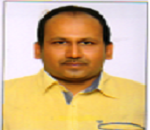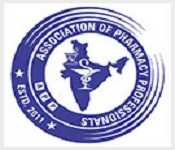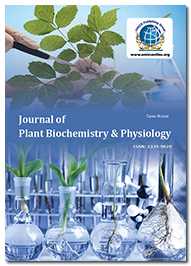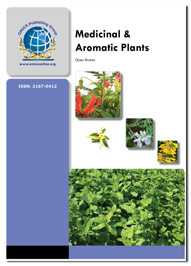Theme: Advanced trends for the future of herbal drugs and its products
Pharmacognosy 2015
OMICS International Conferences invites all the participants across the globe to attend 3rd International Conference and Exhibition on Pharmacognosy, Phytochemistry & Natural Products during October 26- 28, 2015 at Hyderabad India.
Pharmacognosy-2015 is a remarkable event which brings together a unique and international mix of Pharmaceutical, Biotech and Herbal Companies, leading universities and research institutes working in the field of plant and Natural herbal products, making the conference a perfect platform to share experience, foster collaborations across industry and academia and share emerging scientific updates across the globe by means of thought provoking Keynote presentations, Oral talks and Poster presentations.
Pharmacognosy-2015 will schedule and coordinate all meetings with our Editorial Board Members and other experts in the Pharmacognosy, Phytochemistry & Natural Products fields across the world. The pharmacognosy conference scientific program paves a way to gather latest information through the research talks and presentations and put forward many thought provoking strategies in Pharmacognosy Conference
The scientific program will focus on current advances in the research and leading strategies in plant and herbal medicine and its development with a theme “Advanced trends for the future of herbal drugs and its products”.
Track-1: Advanced trends for the future of Herbal Drugs and Products
The number of patients seeking alternate and herbal therapy is growing exponentially. Herbal medicines are the synthesis of therapeutic experiences of generations of practicing physicians of indigenous systems of medicine for over hundreds of years. Herbal medicines are now in great demand in the developing world for primary health care not because they are inexpensive but also for better cultural acceptability, better compatibility with the human body and minimal side effects. Spectroscopic Identification of phytoconstituents are gaining popularity as ingredients in cosmetic formulations as they can protect the skin against exogenous and endogenous harmful agents and can help remedy many skin conditions. Phytochemical screening and bioassays in which the plant-derived substances have recently become of great interest owing to their versatile applications. Medicinal plants are the richest bio-resource of drugs of traditional systems of medicine, modern medicines, Nutraceuticals, food supplements, folk medicines, Pharmaceutical intermediates and chemical entities for synthetic drugs. This product contains complex mixture of many medicinal plant metabolites, such as Natural products: Alkaloids, steroids, flavonoids, and triterpinoids. Phytochemistry and pharmacological investigation of the active ingredients of medicinal plants are gaining popularity as ingredients in cosmetic formulations as they can protect the skin against exogenous and endogenous harmful agents and can help remedy many skin conditions. Chemical tests: Petroleum ether extract, methanol extract, chloroform extract due to Exposure of skin to sunlight and other atmospheric conditions causes the production of reactive oxygen species Phytochemicals may have biological significance, for example Carotenoids or Flavonoids.
Track-2: Analytical Techniques in Phytochemistry
The chemicals derived from plants in a narrower sense the terms are often used to describe the large number of secondary metabolic compounds found in plants the Spectrometry of Phytoconstituents are gaining popularity as ingredients in cosmetic formulations as they can protect the skin against exogenous and endogenous harmful agents and can help remedy many skin conditions. Exposure of skin to sunlight and other atmospheric conditions causes the production of reactive oxygen species, which can react with DNA, proteins, and fatty acids, causing oxidative damage and impairment of antioxidant by using different system. Chromatography and powerful tool of detection of Phytoconstituents of their helpful instruments like Identification: UV, IR, NMR, Mass spectroscopy. This system consolidates human red cell film extraction and superior fluid chromatography to screen potential dynamic segments in Chinese prescription by using HPLC: The dominant separation technique High-performance liquid chromatography is a technique in analytical chemistry used to separate the components in a mixture, to identify each component, and to quantify each component. It relies on pumps to pass a pressurized liquid solvent containing the sample mixture through a column filled with a solid adsorbent material and by using Crystalline structure: X-Ray diffraction is a tool used for identifying the atomic and molecular structure of a crystal, in which the crystalline atoms cause a beam of incident X-rays to diffract into many specific directions.
Track-3: Herbal Drugs and Formulations
The art or practice of using herbs and herbal preparations to maintain health and to prevent, alleviate, or cure disease and a plant or plant part or an extract or mixture of these used in herbal medicine by the Plant extraction method of drug formulation
Herbal and drug interaction and evaluation, in which the herbal drug is used to diagnose, cure, treat, or prevent disease. Drug therapy is an important part of the medical field and relies on the science of pharmacology for continual advancement and on pharmacy for appropriate management of Herbal drugs/compounds discovery and development.
A pharmacological study of Natural herbal products is a method of using natural herbs and plants to promote physical, emotional, and spiritual health. Individuals interested in studying herbal pharmacology at the clinical level of alternative medicine.
Track-4: Drugs from Natural Sources
A chemical compound or substance produced by a living organism—that is, found in nature. In the broadest sense, Natural products include any substance produced by life. Natural products from terrestrial vertebrates and invertebrates plants, microorganisms and marine organisms have extensive past and present use in the treatment of many diseases and serve as compounds of interest both in their natural form and as templates for synthetic modification. Over 20 new drugs launched on the market between 2000 and 2005. Recent efforts into the research and development of Natural products as markers for new drug discovery of anti-cancer drugs have led to the identification of a variety of Terpenoids that inhibit cancer cell proliferation and metastasis via various mechanisms. Despite the increasing number of research reports, there lacks a comprehensive review of Natural products in cancer therapy.
Track-5: Toxicology Studies of Plant Products
They Consists of several major components such as Ayurveda, Siddha, homeopathy and Chemoprevention of diseases by plant products and unani medicines for the treatment of CNS & brain disorders. Medicinal plants constitute a major part in all of these traditional systems. Several regulations and controls on the use of medicinal plants in traditional medicine have evolved In the present review, we collected and critically discussed data on in the prevention of toxicity of anti-cancer drugs. The use of the word Toxicokinetics has changed over the last decade and it is now used, particularly in the pharmaceutical industry, to describe the generation of pharmacokinetic data as an integral component in the conduct of nonclinical toxicity studies. The objective is to describe the systemic exposure to the test substance in animals and its relationship to dose level and the time course of the Toxicokinetics, animals’ models and dose groups
Track-6: Ethnopharmacology
The study of differences in response to drugs based on varied ethnicity and pharmacogenetics.
Intercultural Ethnopharmacology the present conceptual review explores intercultural healthcare as the integration of traditional medicine and Biomedicine as complementary healthcare systems--in minority and underserved communities. This integration can take place at different levels: individuals (patients, healers, and biomedical healthcare providers), institutions (health centers, hospitals) and the Ethno pharmacological perspectives from traditional to modern pharmaceuticals.
Track-7: Phytochemistry and Phytoconstituents
The chemicals derived from plants. In a narrower sense the terms are often used to describe the large number of secondary metabolic compounds found in plants.
That branch of chemistry which deals with the isolation, identification, structure elucidation, and study of the chemical characteristics of chemical substances produced by living organisms of Natural products chemistry in drug discovery of Alkaloids and purines in which the Alkaloids are a group of naturally occurring chemical compounds that contain mostly basic nitrogen atoms. This group also includes some related compounds with neutral and even weakly acidic properties. Common substances like caffeine are purines. Now day’s pharmaceutical companies start processing of Phytochemical evaluation of plant drugs of medicinal and aromatic plants in their formulation by using extraction of active components there are several processes like distillation, effleurage, maceration, expression, solvent extraction and fluid extraction are available for extraction of plant component and which includes Moisture content, total ash, acid insoluble ash, water soluble ash, water soluble Extractive value, alcohol soluble Extractive value, Phytochemical screening, and further isolation and identification of phytoconstituents. This phytochemistry conference covers all the above mentioned topics as sub tracks.
Track-8: Industrial Pharmacognosy
The knowledge concerned with medicinal drugs obtained from plants or other natural sources. The art or practice of using herbs and herbal preparations to maintain health and to prevent, alleviate, or cure disease. Cosmetics from Natural herbal products and herbal cosmetics industry is the concept of beauty and cosmetics is as ancient as mankind and civilization. Indian herbs and its significance are popular worldwide. An herbal cosmetic have growing demand in the world market and is an invaluable gift of nature. Herbal Formulations always have attracted considerable attention because of their good activity and comparatively lesser or nil side effects with synthetic drugs. The future of pharmacy Herbal preparations and phytomedicinals are increasingly being used by the public as self-selected OTC products for therapeutic or preventative purposes. Herbal medicine is as old as the human race and has historically been nurtured by shamans, wise-women and healers. A tremendous amount of empirical information has accumulated to form a nebulous system of herbal medicine.
Track-9: Natural products of Medicinal Interest
A chemical compound or substance produced by a living organism that is, found in nature. Natural products can also be prepared by chemical synthesis (both semi synthesis and total synthesis) and have played a central role in the development of the field of organic chemistry by providing challenging synthetic targets. The term natural product has also been extended for treatment of Anti-cancer agents , Anti-infective agents from plants Within the field of organic chemistry, the definition of natural products is usually restricted to mean purified organic compounds isolated from Analysis of Plant constituents that are produced by the pathways of primary or secondary metabolism and by using the Preparation methods of natural products like Preparative HPLC has emerged as a mainstay of natural products isolation and purification e.g. normal phase, reversed-phase, size exclusion, and ion exchange, can be used to purify most classes of natural products obtained by spectral data. Pharmacognsoy-2015 is also a Natural Products conference and emphasizes on natural products having medicinal interest.
Track-10: Crude Drugs and Plant Products
The products from plant and animal origin found in a raw form, however, the term is also applied to include pharmaceutical products from mineral kingdom in original form and not necessarily only of organic origin such as Kaolin, Bentonite etc. Plant nomenclature and taxonomy is the formal, scientific naming of plants. It is related to, but distinct from plant taxonomy is concerned with grouping and classifying plants; botanical nomenclature then provides names for the results of this process. The starting point for modern botanical nomenclature is Linnaeus' Species Plantarum. Identity, purity, and quality of Crude drugs is a Standardization of drugs means confirmation of its identity, determination of its quality, purity and detection of nature of adulterant by various parameters like morphological, microscopically, physical, chemical and biological evaluations by Micro and macro nutrients in herbal drugs and it is the study of the chemical elements and compounds that are necessary for plant growth, and also of their external supply and internal metabolism. The Macronutrients are consumed in larger quantities and are present in plant tissue in quantities from 0.2% to 4.0% (on a dry matter weight basis). Micro nutrients are present in plant tissue in quantities measured in parts per million, ranging from 5 to 200 ppm, or less than 0.02% dry weight and the Cultivation of medicinal and aromatic plants drugs Cultivation of medicinal and aromatic species gives scope to improve the quality of the drugs.
Track-11: Herbal system of medicines
They are used in the maintenance of health and in the prevention, diagnosis, improvement or treatment of physical and mental illness and there are many different systems of Natural herbal products, and the philosophy and practices of each are influenced by the prevailing conditions, environment, and geographic area the Global trade and commercialization of Ayurveda and other ancient systems of medicine however, a common philosophy is a holistic approach to life, equilibrium of the mind, body, and the environment, and an emphasis on health rather than on disease
Track-12: Plant biotechnology and Tissue culture
The collection of techniques used to maintain or grow plant cells, tissues or organs under sterile conditions on a nutrient culture medium of known composition. Plant tissue culture is widely used to produce clones of a plant in a method known as micro propagation. Plant biotechnology may be defined as the application of knowledge obtained from study of the life sciences to create technological improvements in plant species and the Totipotency and horticulture to which the practice of garden cultivation and management and the ability of cells such as an embryonic stem cell to differentiate into any type of body cell. Plant pathology and physiology is the scientific study of diseases in plants caused by pathogens (infectious organisms) and environmental conditions (physiological factors).Transgenic plants for crop improvement are plants used in agriculture, the DNA of which has been modified using genetic engineering techniques. Examples in food crops include resistance to certain pests, diseases, or environmental conditions, reduction of spoilage, or resistance to chemical treatments (e.g. resistance to a herbicide), or improving the nutrient profile of the crop of Plant growth regulators & its limitations in Pharmacognosy.
Pharmacongosy-2015 conference is also offering the Natural products Expo from

The advent of house by the name of Indian society of Pharmacognosy is a clear omen of the foresightedness of the mastermind’s beings honoring the desk of herbs and their products since times immemorial. The society took birth 38 years back with its headquarters at Punjab University, Chandigarh with the aim of exploring the benefits of the flora and fauna for the human welfare.
Society of Pharmacognosy is a national body of Pharmacy Professionals not only belonging to the stream of Pharmacognosy, but all the other disciplines in function till date. The quality of services being delivered in succession by the society could be assessed by the fact it has members not only from India but from all round the globe.
Every year, society organizes a customary annual national convention and once in four year international conference to compile the thoughts of scientists and academicians engaged in pharmacognosy research.
This year The Society of Pharmacognosy is Formerly The Indian Society of Pharmacognosy is officially collaborated with the conference, several speakers are participating from association as well and Prof. V K Dixit is President of Society of Pharmacognosy and Prof. C K Kokate is National Advisor and Father of Indian Pharmacognosy are delivering a keynote presentations. If you are interested please provide us your title of speech (Abstract of 250 words) as per template.

Prof. C K Kokate
National Advisor and Father of Indian Pharmacognosy, Inida

Prof. V K Dixit
President, Society of Pharmacognosy, India
Conference Highlights
- Advanced Trends for the Future of Herbal Drugs and Products
- Analytical Techniques in Phytochemistry
- Herbal Drugs and Formulations
- Drugs from Natural Sources
- Toxicology Studies of Plant Products
- Ethnopharmacology
- Phytochemistry and Phytoconstituents
- Industrial Pharmacognosy
- Natural Products of Medicinal Interest
- Crude Drugs and Plant Products
- Herbal System of Medicine
- Plant Biotechnology and Tissue Culture
To share your views and research, please click here to register for the Conference.
To Collaborate Scientific Professionals around the World
| Conference Date | October 26-28, 2015 | ||
| Sponsors & Exhibitors |
|
||
| Speaker Opportunity Closed | Day 1 | Day 2 | Day 3 |
| Poster Opportunity Closed | Click Here to View | ||
Useful Links
Special Issues
All accepted abstracts will be published in respective Our International Journals.
- Journal of Natural Products Chemistry & Research
- Journal of Medicinal & Aromatic Plants
- Journal of Plant Biochemistry & Physiology
Abstracts will be provided with Digital Object Identifier by





































